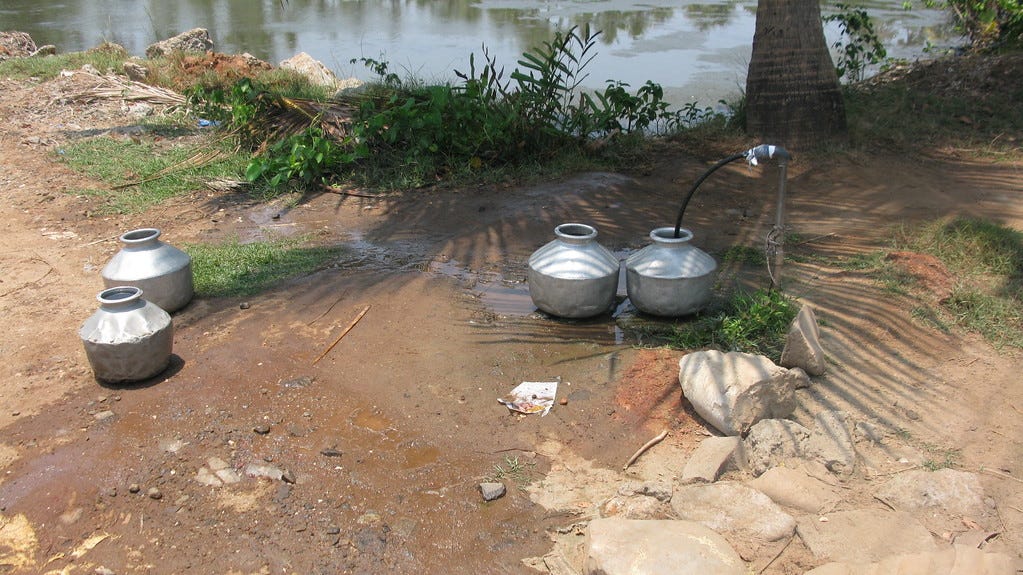Noah Brier | August 15, 2025
The Kabul Water Crisis Edition
On sinking cities, irreversible physics, and toxic mismanagement.
Colin here. For the past half-century, Kabul has endured its fair share of hardship and tragedy. As Afghanistan's capital now works to move past its violent history, a new challenge has emerged, which threatens the city's future in a way no occupying army or theocratic regime ever could.
The city faces a "severe and multi-faceted water crisis" that, if not addressed immediately, "will soon pose an existential threat" to Kabul's six million residents, according to a new study by the nonprofit Mercy Corps. If allowed to continue, the crisis will earn Kabul the sad distinction of becoming the first major capital in modern history to fully exhaust its subterranean water supply.
Why is this interesting?
Kabul's aquifers have dropped 25-30 meters in the past decade, with groundwater extraction exceeding natural recharge by 44 million cubic meters annually. If current trends continue, Kabul's aquifers will become dry by 2030, potentially displacing some three million Afghan residents.
As The Week reported, the looming catastrophe in Kabul represents a perfect storm of mismanagement that should sound familiar to anyone following urban water crises globally. This isn't just another tale of climate change overwhelming a developing city. It's a mix of rapid urbanization, political instability, and infrastructure neglect that creates existential threats no amount of emergency aid can quickly fix.
Kabul isn't alone. It's joining a grim club of megacities that have literally been drinking themselves into the ground, as I explored in the Sinking Cities edition earlier this year. The pattern is remarkably consistent across continents: grow fast, ignore infrastructure, drill deeper when problems arise, repeat until collapse.
Consider Mexico City, where 22 million people depend on an aquifer so over-extracted that the city is sinking 20 inches per year. About 60% of Mexico City's water comes from its underground aquifer, but this has been so over-extracted that the city is sinking at a frightening rate.
Jakarta presents a more drastic case. Some areas of the Indonesian capital are sinking by as much as 25 centimeters per year, making it one of the fastest-sinking cities in the world. Nearly 5,000 undocumented wells are currently in use because the formal water system serves such a small fraction of the population. The situation has become so dire that Indonesia is building a new capital on Borneo, essentially abandoning Jakarta to the waves.
In Kabul, some households are spending up to 30% of their income on water. In Jakarta, the cost of drilling a single well has reached 50-60 million rupiah as crews must now drill at least 130 meters deep to find clean water.
Kabul's crisis is particularly tragic because it adds geopolitical paralysis to an already toxic mix of urban mismanagement. International donors had according to the Week "financed multiple dam projects" and plumbing initiatives, but most "never saw the light of day or were abruptly stopped after 2021" when the U.S. withdrew and the Taliban returned.
The broader lesson is sobering: once cities cross certain thresholds of aquifer depletion and subsidence, the physics become irreversible. You can't un-compact clay soil or quickly recharge aquifers that took millennia to fill. The window for preventive action closes faster than most city planners anticipate, leaving only expensive, partial solutions that just buy time. (CJN)
